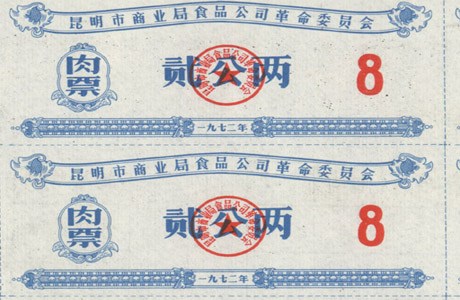Coupons
Food grain ration coupons were first introduced in the mid-1950s when the central government decided to stabilize the grain market and strike a balance between supply and demand.
The coupons were issued for food, fuel, even bicycles and televisions. Without them you were not permitted to purchase goods.
Before China's economic reform and opening up in the late 1970s, however, "People were living simple lives. At that time, you might have money, but you couldn't get what you needed or wanted," recollected Zhang Wei, a 48-year-old ration coupon enthusiast. Zhang held an exhibition made up of 10 billboards, with over 500 culture pieces issued by all Chinese provinces and cities, ranging from local coupons to military ration coupons.
The average monthly ration was 15 kilograms for a man and 13 kilograms for a woman. Meat was much scarcer and rationed at half a Jin (0.25 kilogram) per person a month. The coupons were given to everyone, regardless of wealth, and they are far rarer today than Chinese banknotes from the same period.
Currently, a common coupon is normally worth three yuan. The price for one or two kilogram coupons averages about 500 yuan ($73), but soars up to 1,500 yuan ($210) for the version issued in 1955.


















